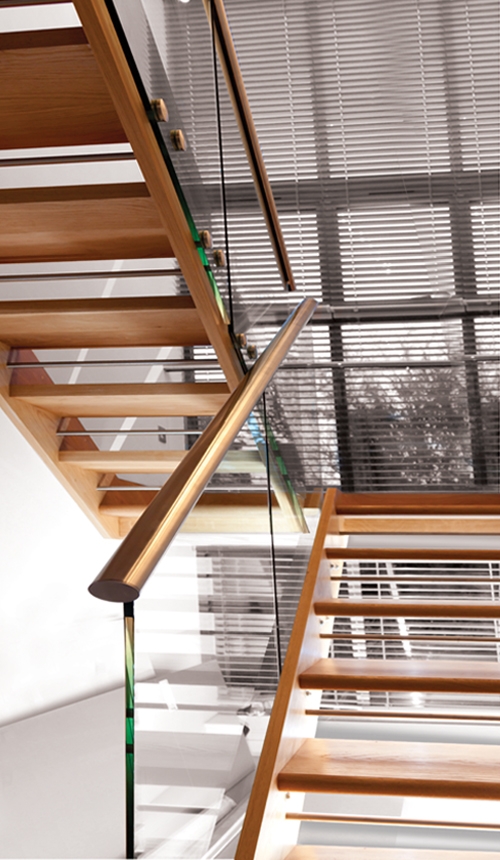| The use of glass really chimes with the current trend for minimalism, but also works well to complement any more detailed or intricate fittings and decoration that surrounds it. Glass is also a useful material for those who wish to give the impression of a larger space and to allow light to travel more easily around the room. Here's how to find the perfect arrangement for your home: | ||||||
1. Toughened glassYou may think of glass as brittle and delicate, but the particular type of heat-treated glass used in balustrades is exceptionally strong. Toughened glass cannot be cut after being treated, so it’s important to collect the correct measurements before ordering. Panels up to 1.7 metres in length can be created from 10mm thick toughened glass, but for safety, larger panels must be 18mm thick. 2. FittingsThe glass can be affixed to the handrail, base rail and newel posts using simple but sturdy stainless steel clamps or brackets. These come in two different sizes. If clamps are used, there will be a 20mm gap between the glass and both the underside of the handrail and the top of the base rail, as well as a 20mm gap between each glass panel and the newel post. However, an alternative option is to affix the glass directly into the wood underneath the handrail, at the top of the base rail and in the side of each newel post. This is sometimes known as “inline” glass. 3. Details and finishing touchesIf you choose clamps of brackets to hold your toughened glass panels in place, you may be pleased to know that the edges of the glass have been bevelled to avoid sharp edges as part of its treatment. You can, however, opt for “sharp corner” glass panels. This doesn’t mean that they are dangerous - it’s simply the description of a design that allows the corners of the panels to follow the right-angle created by the newel and handrail - or the newel and base rail - more closely and neatly, coming to a slight point. “Curved corner” glass panels, on the other hand, provide a softer look, with the corners of each section of glass being rounded off, as the name suggests. Glass can also be used in decorative ways - for example, between the treads of the staircase instead of wooden risers - to create an even greater sense of space and light, and give an “open riser” effect. Visit the Help & Resources section to find out more, browse our online shop or try designing your own staircase using the 3D StairCreator. |
 |
|||||
The Pear Stairs guide to glass balustrades
17/01/2018 10:57
Posted in Tips & Advice
By guest contributor Alex Illidge




